If you're planning to take on a fencing project, then having the right tools is crucial for a successful outcome. One such important tool is a nail gun, which can make the process of securing fence panels much easier and quicker.
In this article, we will discuss what nail guns are and the different types used for fencing. We will also cover safety precautions, how to load and use a nail gun for fencing, and common mistakes to avoid. Whether you're a beginner or an experienced DIYer, this article will provide valuable insights for using a nail gun effectively in your fencing project.
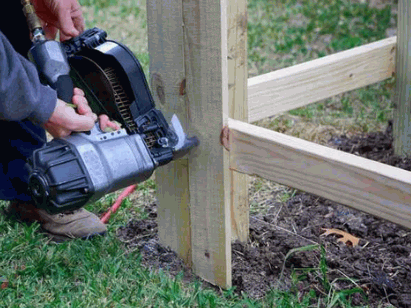
What Is A Nail Gun?
A nail gun, also known as a nailer, is a power tool designed for fastening various materials by driving nails or staples.
Nail guns are essential tools in construction and woodworking projects, providing efficiency and precision in driving nails. They come in various types, such as pneumatic, electric, and cordless models, each designed for specific applications.
Among them, pneumatic nail guns stand out for their power and speed, but it's crucial to prioritize safety when using them. Proper training, wearing safety goggles, and maintaining a secure grip on the tool can prevent accidents and ensure smooth operation on the job site.
Explore further: How To Install A Fence With Concrete Posts
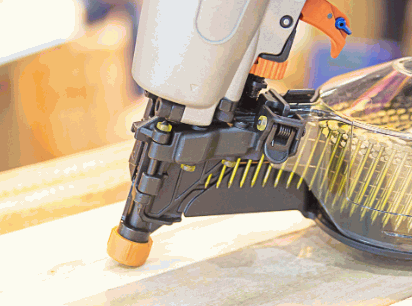
What Types Of Nail Guns Are Used For Fencing?
Fencing: When it comes to fencing, different types of nail guns are utilized to facilitate efficient and secure fence installation.
Nail gun types: Nail guns are designed for specific tasks, including framing, finishing, roofing, woodwork, and garden projects.
Pneumatic nail guns: Pneumatic nail guns are commonly used in construction due to their power and speed, making them ideal for heavy-duty tasks.
Cordless nail guns: Cordless nail guns offer greater portability, making them convenient for remote fencing projects.
Choosing the right nail gun: The type of nail gun chosen should be based on the specific requirements of the fencing project and the materials being used.
Framing Nail Gun
A framing nail gun is a powerful tool suitable for heavy-duty applications such as fencing, woodwork, construction, and DIY projects.
A framing nail gun is an indispensable tool in construction tasks due to its ability to quickly and consistently drive large framing nails. It greatly speeds up processes such as building decks, framing houses, and constructing fences. Even in DIY projects, it allows for efficient completion of tasks like building furniture or installing shelves.
However, safety should always be a top priority when using these tools. Proper training, understanding of the tool's features, and adherence to safety precautions are crucial for preventing accidents and ensuring successful project completion.
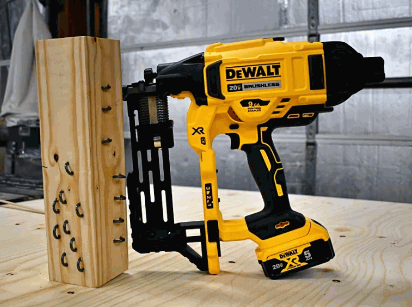
Brad Nail Gun
The Brad nail gun is commonly used in fencing, woodwork, construction, and DIY projects due to its versatility and precise fastening capabilities.
The Brad nail gun is known for its effortless ability to drive thin gauge nails into delicate moldings and trim without splitting the wood. This makes it an ideal tool for delicate woodworking tasks and detailed finishing work.
In addition, its compact size and maneuverability make it easy to access tight spaces, making it a popular choice for both DIY enthusiasts and professionals. However, as with all power tools, it is important to use caution when operating the Brad nail gun and follow safety guidelines, such as wearing eye protection and being mindful of hand placement when firing nails.
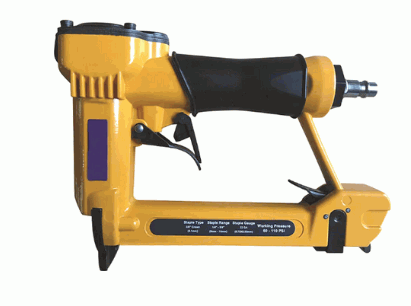
Finish Nail Gun
The Finish nail gun is a valuable tool for fencing, woodwork, construction, and DIY projects. It is known for its precision and ability to drive nails into delicate materials.
Finish nail guns are a popular choice for attaching trim, molding, and small pieces of wood. One of its key advantages is its ability to neatly countersink nails without causing the material to split. This makes it a favorite among both DIY enthusiasts and professional carpenters, as it saves time and effort.
However, it's important to take safety precautions when using a Finish nail gun. This includes wearing protective eyewear and ear protection, as well as following proper handling techniques. By understanding the features and taking necessary precautions, individuals can make the most of this tool for their various projects.
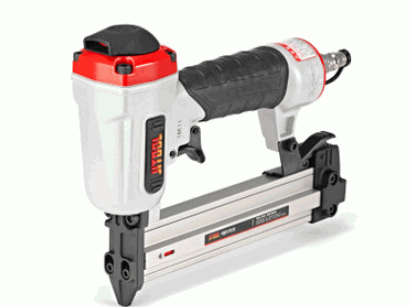
What Are The Safety Precautions When Using A Nail Gun For Fencing?
When using a nail gun for fencing, it is crucial to observe strict safety measures to prevent accidents and ensure the efficient operation of the equipment.
This includes understanding the proper handling of pneumatic nail guns. It is important to be acutely aware of the trigger mechanism to prevent accidental fires.
Safe tool storage and regular maintenance are also essential to ensure the integrity and functionality of the nail gun. By following these safety precautions, users can mitigate the risk of injuries and work confidently with the nail gun for various projects.
Wear Protective Gear
Prior to using a nail gun for fencing, it is imperative to wear appropriate safety gear, including eye protection and hearing protection, and to ensure correct pressure settings for the air compressor.
This safety gear is crucial for shielding the eyes and ears from flying debris and loud noise. When operating a nail gun, it's also important to maintain the right pressure settings on the air compressor to prevent any mishaps.
It's recommended to use a full-face shield or safety goggles to protect the eyes, and earmuffs or earplugs to minimize the risk of hearing damage. Ensuring that the air compressor's pressure is at the recommended level for the type and size of nails being used can significantly enhance safety during fence construction projects.
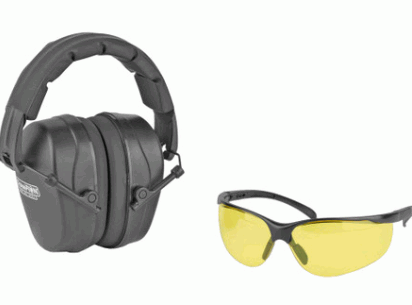
Keep The Gun Away From Your Body
When operating a nail gun for fencing, it is essential to maintain a safe distance and keep the gun away from your body to avoid potential injuries.
Before using a nail gun, it's important to regularly check for any damage or malfunctions. Additionally, make sure to wear appropriate safety gear like gloves and safety glasses.
Always point the nail gun away from yourself and others, and never carry it with your finger on the trigger. It's also crucial to clear the work area of any obstructions and ensure that everyone nearby is aware of the nail gun's operation. These precautions are essential for preventing accidents and maintaining a safe work environment.
Be Aware Of Your Surroundings
In the context of fencing and related projects, it is crucial to remain aware of the surroundings and potential hazards when using a nail gun to ensure a safe working environment.
Situational awareness is particularly essential in construction and fencing sites, as the presence of various materials and structures can create unpredictable conditions.
When using a nail gun, it's vital to be mindful of the location of electrical wires, pipes, and other potential obstructions to avoid accidents.
Continuously inspecting the work area for any tripping hazards or uneven surfaces can prevent falls and injuries.
By staying vigilant and having a well-defined understanding of the surroundings, workers can significantly reduce the risks associated with nail gun operations.
Disconnect The Gun When Not In Use
When the nail gun is not in use, it is essential to disconnect it from the air compressor and practice proper maintenance to ensure its optimal performance for future fastening tasks.
This simple practice not only prevents accidental firing and potential injuries but also prolongs the life of both the nail gun and the air compressor.
Proper maintenance includes regular cleaning and lubrication of the nail gun, checking for any wear and tear in the hoses and connections, and ensuring that the air compressor is in good working condition. By adhering to these maintenance practices, users can ensure that their equipment functions reliably and efficiently for a longer period of time.
How To Load A Nail Gun?
Loading a nail gun is a fundamental aspect of its operation, essential for driving nails and facilitating efficient fastening in various projects such as fencing.
Different types of nail guns have specific loading mechanisms. For example, for a pneumatic nail gun, the loading process typically involves disconnecting the gun from the air compressor, opening the magazine door, and inserting the nail strip. On the other hand, a cordless nail gun may require charging the battery and aligning the nails in the magazine. Regardless of the type, it's crucial to follow the manufacturer's instructions for loading to ensure safe and effective operation.
When using a nail gun for fencing, positioning the nail gun at the correct angle and applying consistent pressure is essential for securely fastening the nails and achieving a professional finish. It's important to always wear appropriate safety gear and handle the nail gun with care to prevent accidents or injuries.
By following these loading and usage guidelines, you can efficiently complete fencing and related projects while prioritizing safety.
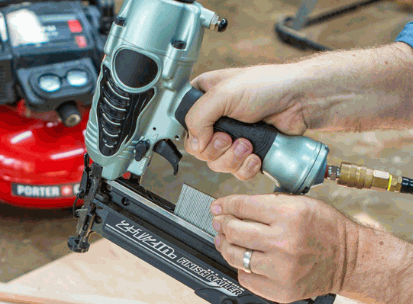
How To Use A Nail Gun For Fencing?
Utilizing a nail gun for fencing involves a series of steps and techniques to ensure precise and secure installation of fence panels, making it an essential tool for woodwork and construction projects.
When installing a fence, it's important to choose the right size and type of nails for the material and properly load and adjust the nail gun. Next, position the fence panels and use the nail gun to secure them to the support posts. Consistent pressure and correct angle are crucial for efficient and uniform fastening. Safety should always be a priority, so make sure to wear protective gear and follow the manufacturer's guidelines for operating the nail gun.
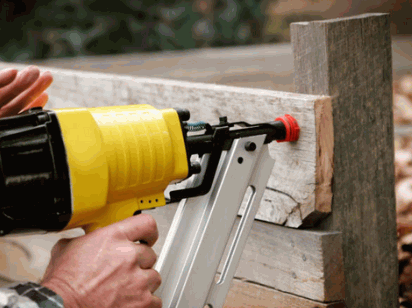
Prepare The Fence Panels
Before utilizing a nail gun for fencing, it is essential to prepare the fence panels. This includes ensuring they are positioned and aligned for efficient installation in the woodwork or construction project.
To achieve optimal alignment, it is important to thoroughly inspect the panels for any bends, twists, or warps. Additionally, precise measurements and cuts are crucial for a proper fit in the designated area. Taking the time to carefully align the panels before using a nail gun not only results in a more polished finish but also streamlines the installation process, ultimately saving time and effort.
Set Up The Nail Gun
Setting up the nail gun for fencing involves connecting it to the air compressor, and ensuring proper power tool functionality for efficient fence installation.
This process begins by selecting the appropriate air hose and attaching it securely to the nail gun. It's crucial to check the air compressor's settings and ensure that it provides sufficient pressure for the nail gun to operate effectively.
Once the connection is established, the nail gun should be tested on a scrap piece of wood to ensure that it's driving the nails at the desired depth and with the right amount of force. This straightforward setup is essential for streamlining the fencing process and achieving professional results.
Place The Fence Panels
Once the nail gun is ready, the next step in fencing involves placing the prepared fence panels in the desired location. This ensures they are positioned for secure and efficient installation in woodwork or garden projects.
Securing the fence panels is crucial for a well-constructed fence, as it plays a significant role in the overall stability and longevity of the structure. Properly aligning the panels ensures that the nail gun can be used effectively, allowing for precise and sturdy attachment.
Ensuring a consistent and level placement of the panels is essential not only for aesthetic purposes but also for maintaining the structural integrity of the fence. Careful attention to the positioning of the fence panels will contribute to a successful and durable fence installation.
Secure The Panels With Nails
Using the nail gun, securely fasten the fence panels by driving nails into the designated positions. This will ensure effective and durable installation for woodwork and construction projects.
Not only will this ensure the stability and longevity of the fence, but it will also enhance its aesthetic appeal.
When using the nail gun, make sure to hold it firmly against the fence panels and maintain a steady hand to drive the nails straight and true. Always wear appropriate safety gear, such as goggles and ear protection, when operating the nail gun for added safety.
Proper maintenance of the nail gun is essential to ensure its optimal performance and longevity for efficient fence installation.
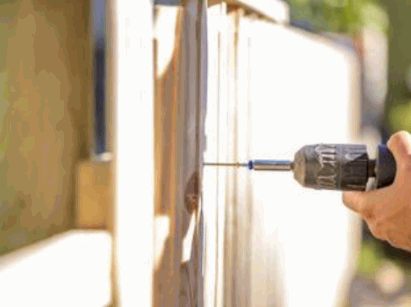
What Are The Common Mistakes When Using A Nail Gun For Fencing?
While using a nail gun for fencing, certain common mistakes can occur. These include choosing the wrong type of nail gun and neglecting safety precautions, especially in DIY projects.
When it comes to fencing, it's crucial to select the right nail gun for the job. However, many DIYers may overlook important safety measures, such as wearing protective gear like goggles and earplugs. Additionally, overloading the nail gun or using incorrect nail sizes can lead to equipment damage and serious accidents. To avoid these common mistakes, it's essential to take proactive measures for a smooth and safe fencing project.
Using The Wrong Type Of Nail Gun
One common mistake when using a nail gun for fencing is selecting the wrong type of nail gun for a specific woodwork or construction project. This can compromise the quality and efficiency of the installation.
Using an inappropriate nail gun in fencing can lead to various issues such as improper fastening, weak joints, or even splitting of wood. It's crucial to match the nail gun type with the material and project requirements. For fencing, a framing nail gun or a finish nail gun may be more suitable depending on the type of wood and the specific tasks involved. These nail guns provide the right amount of force and precision for secure and durable fence construction. It's essential to prioritize safety and effectiveness by carefully selecting the appropriate nail gun for your fencing projects.
Not Wearing Protective Gear
Neglecting to wear the necessary protective gear when using a nail gun for fencing is a common mistake that can jeopardize personal safety, particularly when operating the equipment with incorrect pressure settings.
When undertaking a fencing project, it is essential to prioritize safety. Wearing protective equipment such as safety goggles, ear protection, and sturdy gloves can significantly reduce the risk of injury from flying debris or accidental firing.
Ensuring that the nail gun is set to the correct pressure for the specific type of material being fastened is crucial. Proper pressure settings not only enhance the effectiveness of the nail gun but also contribute to a safer working environment. Regularly checking and maintaining the pressure settings will further guarantee a secure and successful operation.
Overloading The Nail Gun
Overloading the nail gun with excessive fasteners can lead to equipment malfunction, compromised safety, and the need for extensive maintenance, posing a common pitfall in fencing and fastening projects.
This can affect the balance and accuracy of the nail gun, leading to potential misfires or jamming.
Proper equipment maintenance, including regular cleaning and inspection, is vital to ensure the nail gun's efficient performance.
It is essential to follow manufacturer guidelines for the maximum fastener capacity and to avoid overloading the nail gun beyond its recommended limit.
Conducting regular checks on the condition of the nails and ensuring they are not bent or damaged can help prevent overloading and maintain a safe and productive work environment.
